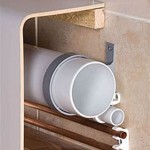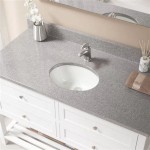Best Ways to Lay Rectangular Tile in a Small Bathroom
Transforming a small bathroom with tile can be a rewarding project, adding both style and durability. Rectangular tiles, available in a wide range of sizes and materials, offer versatility for design and functionality. Whether creating a classic or contemporary look, careful planning and execution are crucial in maximizing a small space. This article explores the best ways to lay rectangular tile in a small bathroom, considering factors such as tile size, layout pattern, and grout color.
Choosing the Right Tile Size
Selecting the appropriate tile size is fundamental for maximizing the visual appeal of a small bathroom. Larger tiles can create a sense of openness and minimize the appearance of grout lines, ideal for creating a clean and spacious feel. However, large tiles may require more precise cutting, especially in corners and around fixtures. Smaller tiles, while requiring more grout, can add visual interest and create a more intimate atmosphere.
Consider the dimensions of your bathroom and the size of its features. In a very small space, opting for smaller tiles may be more practical. However, if you desire a minimalist aesthetic, larger tiles can make the space feel larger and more streamlined. Importantly, ensure the tile size chosen complements the dimensions of the bathroom, avoiding an overwhelming or disjointed appearance.
Creating Visual Interest with Tile Layouts
The layout of rectangular tiles significantly influences the visual impact of the bathroom. Traditional layouts, such as running bond or stacked, offer a clean and timeless aesthetic. However, exploring other patterns can add visual interest and break the monotony of a small space. Herringbone, basketweave, and diagonal layouts can create dynamic patterns that draw the eye and make the space feel larger.
Remember that complex layouts often require more cutting and attention to detail, which can increase installation time and complexity. If you're seeking a simple yet elegant design, traditional layouts can be achieved with ease. Conversely, if you desire a bold, statement-making aesthetic, more intricate layouts can elevate the space. Consider your personal style and desired aesthetic when choosing a tile layout.
Utilizing Grout Color and Size
Grout, the material filling the spaces between tiles, plays a crucial role in the overall visual impact of a tiled bathroom. While it may seem like a minor detail, the grout color and size can significantly influence the perceived size and feel of the space. Dark grout lines, for example, can make a small bathroom appear smaller by creating a sense of division. Conversely, light grout can create a more seamless and expansive appearance. Choosing a grout color that complements the chosen tiles and the overall colour scheme is essential.
The size of the grout lines impacts visual continuity. Wider grout lines can draw attention to the divisions between tiles, while narrow grout lines create a more seamless appearance. In a small bathroom, narrower grout lines are generally preferred for minimizing the visual impact of the grout and maximizing the feeling of space. Choosing the correct grout size and color can enhance the visual appeal and functionality of the space.
Maximizing Space with Strategic Tile Placement
The strategic placement of tiles can influence the perception of space and enhance the overall design. For instance, using large tiles in the shower area can create a sense of spaciousness and minimize the number of grout lines. Consider using a smaller tile size for the bathroom floor, as it can provide greater traction and complement the larger tiles in the shower.
When tiling around fixtures, consider the placement of the tiles to minimize the need for cutting and ensure a clean, seamless finish. For example, ensuring the tiles around the sink and toilet are centered can create a clean and symmetrical look. Incorporate small but impactful design elements, such as accent tiles in a different color or pattern, to add visual interest and depth to the space.
Creating a Unifying Aesthetic
Choosing a consistent color palette for the walls, floor, and shower area is essential for achieving a unified and balanced aesthetic. This doesn't necessitate using the same tile, but rather creating a harmonious flow between the different elements through the use of complementary colors and textures. Consider using a similar tile for the floor and shower walls to create a sense of continuity and expand the perception of space.
If adding a shower surround, consider using the same tile as the bathroom floor to maintain visual consistency. Alternatively, use a tile with a similar color and texture but in a different size to create subtle variation. Remember that the overall aesthetic should reflect your personal style and preferences, creating a space that feels inviting and personalized.

Big Tile Or Little How To Design For Small Bathrooms And Living Spaces S Of America

Big Tile Or Little How To Design For Small Bathrooms And Living Spaces S Of America

Bathroom Floor Tile Layout In 5 Easy Steps Diytileguy

Tiling A Small Bathroom Dos And Don Ts Bob Vila

Big Tile Or Little How To Design For Small Bathrooms And Living Spaces S Of America

Laying Floor Tiles In A Small Bathroom Houseful Of Handmade

Choosing Tiles For A Small Bathroom Tile Wizards

Big Tile Or Little How To Design For Small Bathrooms And Living Spaces S Of America

Which Direction Should You Run Your Tile Flooring Well Designed

What Size Tile Should I Use In A Small Bathroom Warehouse
Related Posts







